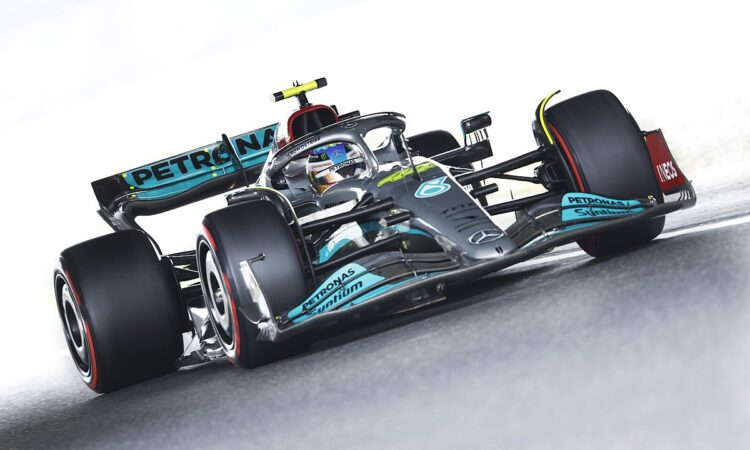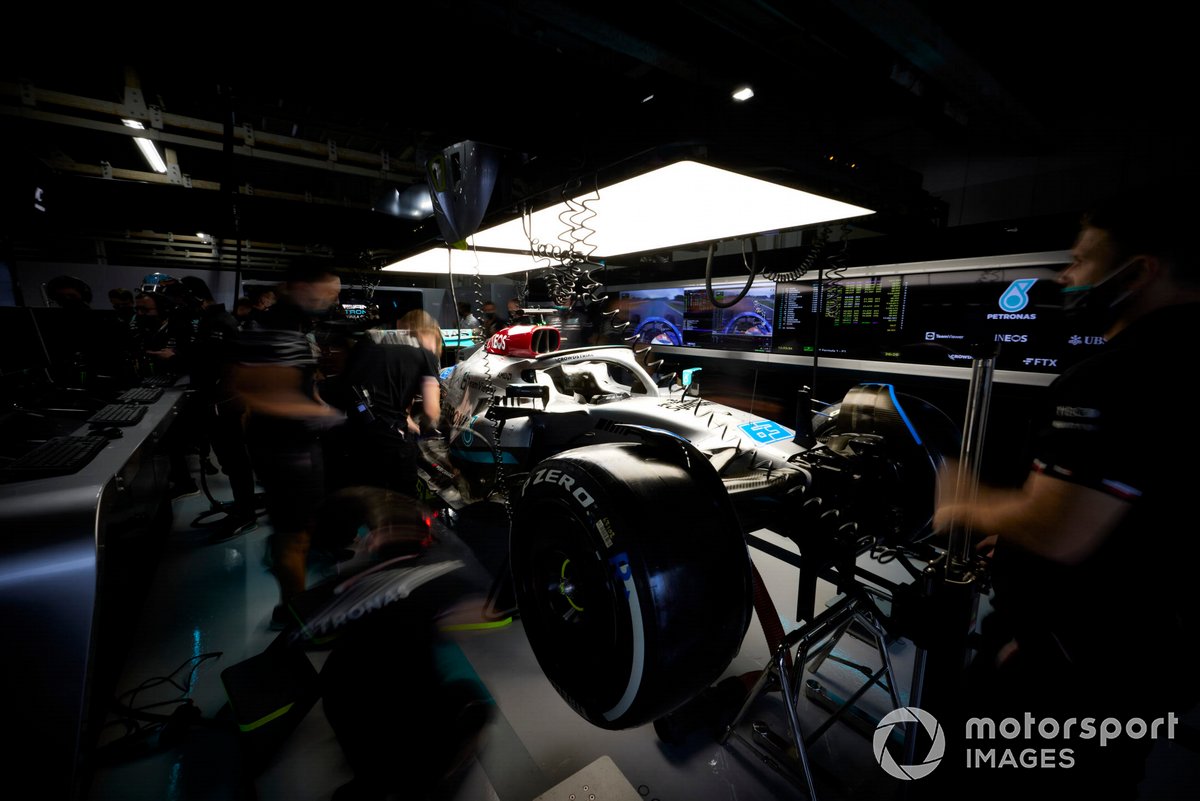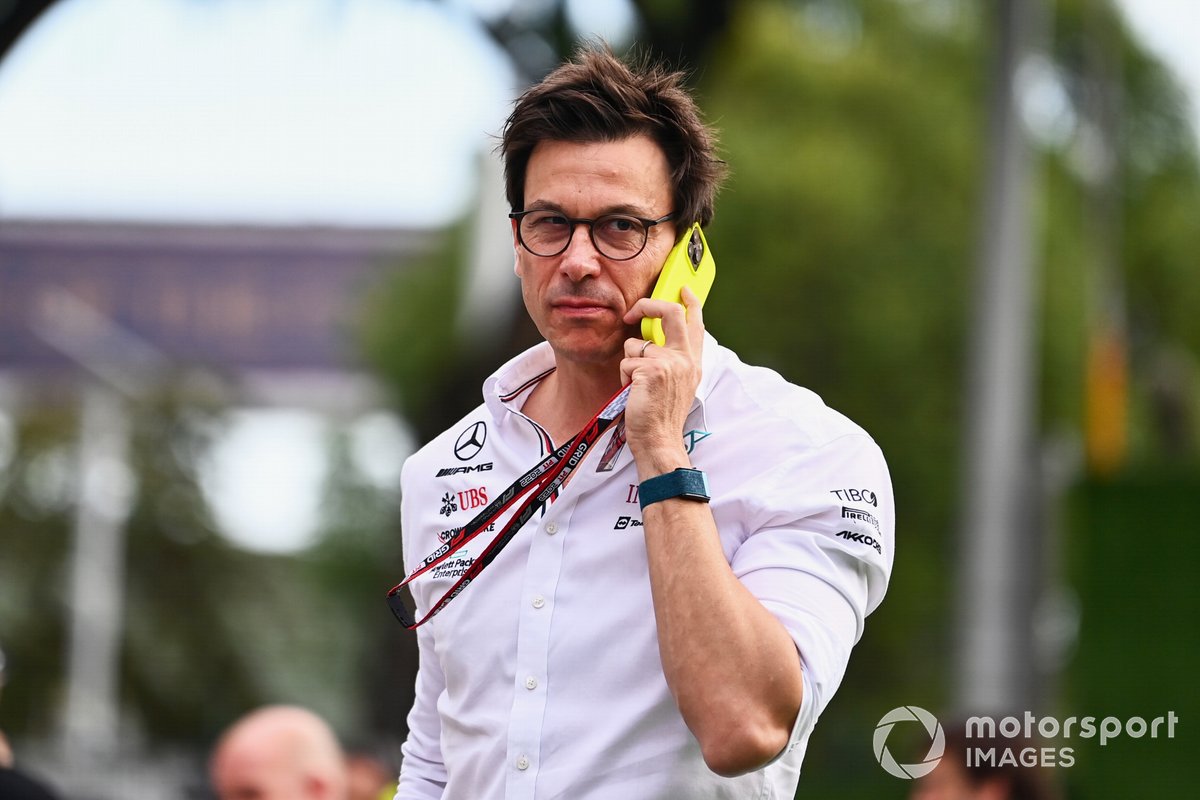
The overall spending of Mercedes-Benz Grand Prix Limited fell from £324.9m in 2020 to £297.4m last year, despite the calendar being extended from 17 to 22 races as the impact of COVID faded.
While many elements included in the overall total do not come under the cap, the drop in spending of £27.4m reflects how the team had to adjust to the new era of cutting costs.
It also contributed to an overall increase in profits, from £13m in 2020 to £68.8m in 2021.
The other key element in the profit hike was an increase in turnover, meaning sponsorship and F1 prize money income, went from £355.3m to £383.3m.
Parent company Mercedes-Benz AG did not have to make a financial contribution, reflecting just how much income the team is generating.
Mercedes does however still provide finance to the separate HPP organisation from which the F1 team in turn buys its power units.
In another indication of how the cost cap has had an impact, the overall headcount at Mercedes-Benz Grand Prix tumbled in 2021. It rose from 1016 staff in 2019 to 1063 in 2020, the last year without a cap – when most F1 teams invested heavily before the restrictions came in.
In 2021, with the cap now applied, it fell back again to 1004.
However, more significant than the overall fall was the drop in the number of people employed in design and engineering – those who fall directly under the cap. Having risen by 34 in 2020, it was slashed by 75 last year, from 906 to 831.
In contrast, the total of those employed in administration, not restricted by the cap, rose from 157 to 173 in 2021.

Mechanics work on the George Russell Mercedes W13 in the garage
Photo by: Steve Etherington / Motorsport Images
That was boosted by extra human resources, legal and accounts staff members, many of whom were hired to help the team deal with the extra work created by monitoring and administering the cap.
Wolff said that meeting the cap in 2021 had been “painful”, but that ultimately it helped to increase the profitability of the organisation.
“What has happened in F1 is that by setting a spending limit on the largest part of the cost centres in the team, we had to restructure and change our processes, make people redundant, unfortunately also, to fit into the cost cap,” Wolff told Autosport.
“Which is particularly painful if you hear the discussions of teams not having done that.
“As an organisation that was spending on engineering, in order to achieve the best performance, and suddenly needing a structure that needs to analyse from the moment of purchase throughout the production, the logistics and then deployment on the car, and setting priorities of what you give to the car, that’s super painful and difficult.
“The advantage is that, like the US [sports] franchises, we’ve set the spending limit, we’ve excluded support areas.
“So the support areas still needed to grow vastly in order to support the organisation with the cost cap. But the bottom line, if you’ve been successful on track with the TV money, sponsorship is basically going directly into your margins. And that has happened in the US.
“The bottom line pays for itself, because we can’t spend more than that. We grow costs in the support areas.
“The cost cap has been restructuring-wise such a painful exercise, but financially it has changed the business model from to a lightly profitable company, or just profitable company, into a business with a 25% EBIT [earnings before interest and tax] margin.”
Wolff said the headcount for the administration side of the company has grown even further in 2022.

Toto Wolff, Team Principal and CEO, Mercedes AMG
Photo by: Simon Galloway / Motorsport Images
“This is pre-empting 22 accounts, but we have 30 people more in finance, we have eight people more in legal, we have 50 heads more in marketing, communication, sponsorship, all of that, to administer the cost cap.”
Wolff cited one example of how while previously a senior engineer would interview job candidates, now that is done by an HR specialist, allowing the engineer – who comes under the cap – to focus all their efforts on their main role.
“Imagine the hiring process. An engineer in the past would hire a candidate or would interview candidates. First of all, you can’t afford it [in terms of their time.]
“But the other thing is, we don’t know if we can afford it financially. So they need to link back with HR, and HR needs to link back with finance, and say we need another head that’s costing us £45,000 a year. Can we afford it?”
Like other top teams, Mercedes has shifted many F1 people into non-racing projects.
“In applied science, we have America’s Cup, and we have various other projects on performance engineering,” Wolff added.
“We don’t want to be an engineering boutique that offers service to the industry. It’s really about records, wherever wants to be – records on land, sea, air and space, this is an area for us.”






